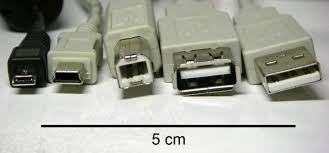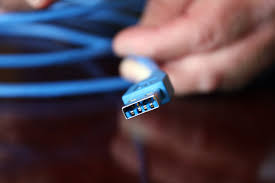

Universal Serial Bus (USB) is a serial bus standard for connecting peripherals to a host. It was designed to allow peripherals to be connected using a single standardized interface and to improve plug and play capabilities by allowing peripherals to be connected or disconnected without having to reboot the computer or turn the device off. This bus can connect devices including mice, keyboards, gaming controllers, scanners, digital cameras, printers, digital media players, flash drives and external hard drives. USB has become the standard connection method for the majority of consumer electronic devices. To date, billions of these devices have been introduced into the consumer electronics market.
The USB Implementers Forum, Inc. (USB-IF) is a non-profit corporation founded by leading companies in the computer and electronics sectors. The organization was formed to provide a support group and forum for the advancement and adoption of USB technology. The Board of Directors is currently comprised of the following companies: Hewlett-Packard Company, Intel Corporation, LSI Corporation, Microsoft Corporation, NEC Corporation and ST-Ericsson.
USB 1.0 and 1.1
The USB 1.0 specification was introduced in 1994 with two data rates, Low-Speed (1.5 Mbps) and Full-Speed (12 Mbps). It was designed to replace the myriad of connectors at the back of PCs and simplify software configuration of communication devices. The 1.1 specification was released in 1998 and was the earliest revision to be widely adopted.
USB 2.0
The USB 2.0 specification was released in 2000 and was standardized by the USB-IF in 2001. Several companies led the initiative to develop a higher data transfer rate of 480 Mbps, about 40 times faster than the 1.1 specification. Also known as Hi-Speed USB, 2.0 expanded the range of external devices that could be used on a computer. And, offered backward compatibility with previous generations.
USB On-The-Go
Many USB devices are portable, and there is an increasing need for devices to communicate directly with each other without a computer. The On-The-Go Supplement makes it possible for peripherals to communicate directly with each other. On-The-Go features include:
- Limited host capability to communicate with selected USB peripherals
- A small connector appropriate for the mobile form
- Low power requirements for preserving battery life
- Ability to be either host or peripheral and to dynamically switch between the two.
Wireless USB
Wireless USB is a short-range, high-bandwidth wireless radio communication technology originally developed by the Wireless USB Promoter Group and subsequently managed by the USB-IF. Designed from the ground up to address challenges of wireless communications and personal networking, this standard combines the speed and security of wired technology and the ease-of-use of wireless technology. It can be used in devices including game controllers, printers, scanners, digital cameras, digital music players, hard disks and flash drives. It can also transfer parallel video streams.
It is capable of sending date at a rate up to 480 Mbps at a 3 meter distance and up to 110 Mbps up to 10 meters. It was designed for the 3.1 to 10.6 GHz frequency range. The Wireless architecture allows up to 127 devices to connect directly to a host. With the elimination of wires, a hub is not needed. An upcoming Wireless 1.1 specification will increase data transfer speed to 1.0 Gbps per second.
USB 3.0
In November 2008, the USB 3.0 Promoter Group announced the completion of the 3.0 specification. It delivers transfer rates up to 10 times faster than USB 2.0 through the utilization of a 5.0 Gbps data rate. Additionally, it has optimized power efficiency, sync-n-go technology that minimizes user wait-time and backward compatibility with USB 2.0. SuperSpeed USB devices interoperate with 2.0 platforms and SuperSpeed USB hosts support Hi-Speed legacy devices.
NEC Electronics recently announced the first USB 3.0 host controller (part number µPD720200). With its high-speed data transfer capability, the new SuperSpeed host controller will require only 70 seconds to transfer 25 GB of HD video content, the equivalent of a Blu-Ray disc. Transferring the same content would take upwards of 14 minutes with Hi-Speed USB.
Advances in USB technology will lead to a new generation of high-performance, consumer electronic products. For assistance with SuperSpeed product development, the SuperSpeed USB Platform Integration Lab (PIL) is now open for USB-IF members. The SuperSpeed USB PIL provides 3.0 developers with the opportunity to test host and device interoperability. For more information, visit the PIL testing page.
No comments:
Post a Comment